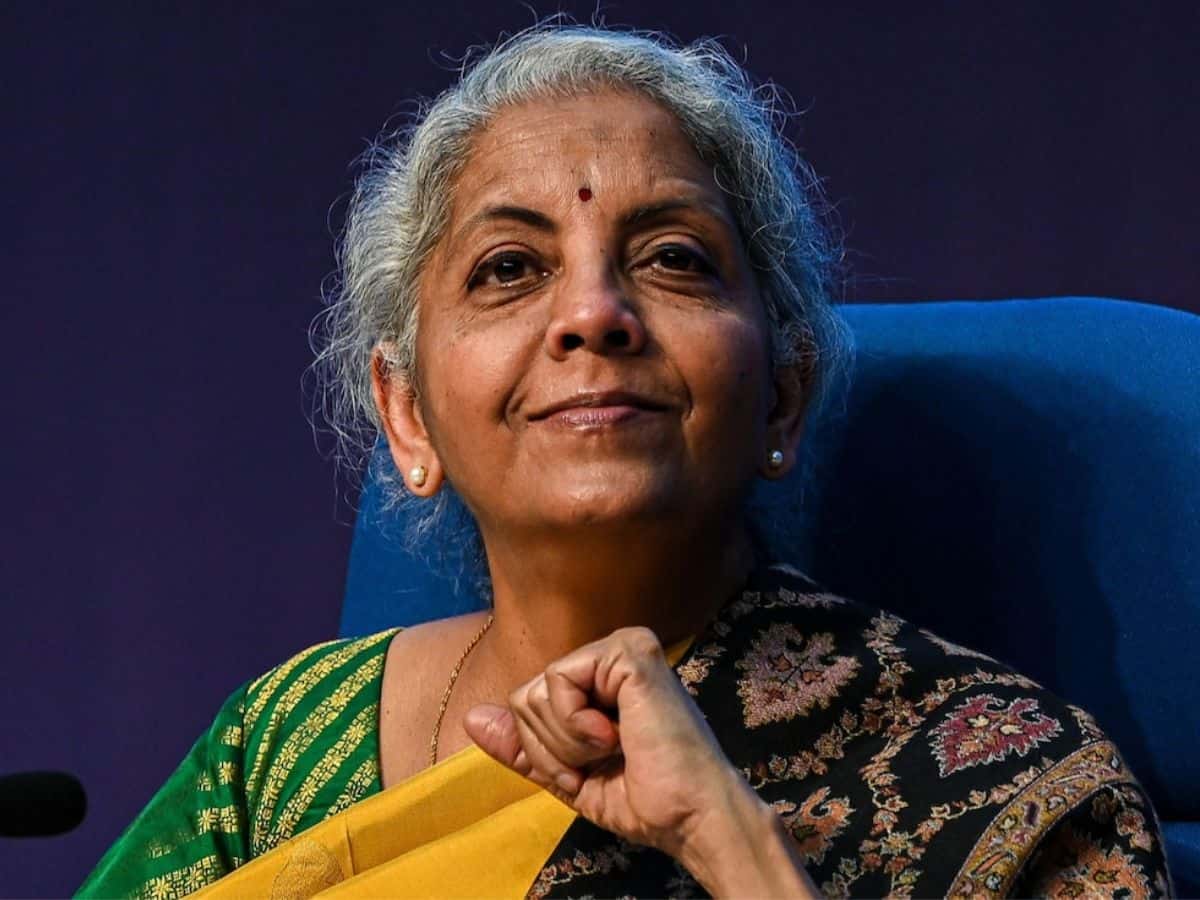
New Delhi: Finance Minister Nirmala Sitharaman said on Monday that two significant milestones have now been achieved in the larger GST architecture with the appointment of the President of the GST Appellate Tribunal (GSTAT) and gross GST collections crossing the landmark of Rs 2 lakh crore, thanks to heightened economic activity in the country.
In a detailed statement on X, the Finance Minister cited figures to show how GST has benefited the poor by reducing taxes on essential goods, and led to greater finances being made available to the states as part of the objective to promote federalism.
She said that GST, which was first mooted by the erstwhile Atal Bihari Vajpayee-led NDA government, was ultimately implemented under the leadership of Prime Minister Narendra Modi after the necessary consensus was carefully built, and the GST Acts were passed by the Parliament in 2016.
She also said that in 10 years, the UPA was unable to achieve political consensus on GST.
The Finance Minister said that before the implementation of GST, India’s indirect tax system was fragmented and complicated, and every state was practically a distinct market in itself with different rules and tax rates.
Inputs for Central excise duty, etc., could not be availed, leading to an increased tax burden on the common people, she said.
The GST streamlined 17 taxes and 13 cesses into a five-tier structure, simplifying the tax regime. The turnover threshold for registration rose to Rs 40 lakh for goods and Rs 20 lakh for services (from Rs 5 lakh on average under VAT). The GST also reduced 495 different submissions (challan, forms, declarations, etc) across states to just 12, she explained.
The GST simplified compliances through uniform processes, simple registration, single returns, and a fully IT-driven system with minimal physical interface, she added.
The Quarterly Returns with Monthly Payment (QRMP) scheme, with much lower compliances, has benefited over 44 lakh small taxpayers and MSMEs. As per a Deloitte survey (2023), 88 per cent of MSMEs credit GST for cost reductions along with optimised supply chains.
The GST regime has enhanced MSME financing through tools like e-invoicing, TReDS, and the Account Aggregator framework. The number of registered taxpayers under the GST grew to over 1.4 crore from 65 lakh in 2017, the Finance Minister said.
The E-way bill system removed inter-state checkpoints, reducing logistics costs. Trucks travelled 44 per cent more daily, and corruption at tax ‘nakas’ decreased. Consequently, domestic goods’ inter-state trade surged to 35 per cent of GDP in FY22, up from 23.5 per cent in FY18, she pointed out.
The Finance Minister said, “Reflecting a pro-poor approach, the effective weighted average GST rate has consistently fallen since 2017. The Revenue Neutral Rate was suggested to be 15.3 per cent but was lower at 14.4 per cent in 2017, and it has come down to 11.6 per cent in 2019.”
The GST lowered taxes on many essential items compared to pre-GST rates. Common items like hair oil and soaps saw tax being cut from 28 per cent to 18 per cent.
Electrical appliances are taxed at 12 per cent against 31.5 per cent before. Movie tickets were taxed lower, too. Further tax rate rationalisation has been done since 2017. The National Anti-profiteering Authority has ensured that companies passed the benefits to the consumers, FM Sitharaman said.
The Finance Minister also cited the fact that GST has exempted many essential items and services, such as unbranded food items, certain life-saving drugs, healthcare, education, public transport, sanitary napkins, hearing aid parts, and agricultural services to drive home her point.
She also said that GST exemplifies cooperative federalism in India besides empowering the states.
The GST Council, with a 75 per cent majority vote requirement, assigns one-third voting power to the Centre and two-thirds to the states. Out of the 52 meetings, all decisions but one were reached through consensus.
“As the Chairperson of the GST Council, I have ensured that the voices of all states are heard equally without bias,” she said.
“It is a myth that all GST collections are pocketed by the Centre. GST contributes significantly to state revenues — states receive 100 per cent of the SGST collected in a particular state, and approx. 50 per cent of IGST (i.e. on inter-state trade). A significant portion of CGST, i.e., 42 per cent, is devolved to the the states based on the Finance Commission’s recommendations,” the Finance Minister pointed out.
She also cited figures to show that GST has improved tax buoyancy from 0.72 (pre-GST) to 1.22 (2018-23). Despite compensation ending, state revenues remain buoyant at 1.15.
The Finance Minister also said that without GST, states’ revenue from subsumed taxes from FY 18-19 to 2023-24 would have been Rs 37.5 lakh crore. With GST, the states’ actual revenue amounted to Rs. 46.56 lakh crore.
She said that despite the GST rate being less than the prescribed Revenue Neutral Rate, and the Covid pandemic affecting the revenues, GST collections (as a percentage of GDP) have now reached the levels they were before GST (both net and gross).
This demonstrates that the Centre and the states, collectively through better tax administration, are able to collect the same revenue with a lower burden on the taxpayers.
“GST is an expression of Modi government’s commitment to‘Sabka Saath, Sabka Vikas, Sabka Vishwas, Sabka Prayaas’. Our continuous efforts are towards ensuring that new heights are scaled through better taxpayer services and increased efficiencies instead of increased taxes,” FM Sitharaman said.



